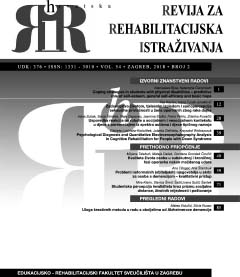Usporedba reakcija na robote u socijalnom i nesocijalnom kontekstu u djece s poremećajem iz spektra autizma i djece tipičnog razvoja
Reaction to robots in social and non-social contexts – comparison of children with autism spectrum disorders and their typical peers
Author(s): Ivana Zubak, Sanja Šimleša, Maja Cepanec, Jasmina Stošić, Franjo Petric, Zdenko KovačićSubject(s): Neuropsychology
Published by: Sveučilište u Zagrebu, Edukacijsko-rehabilitacijski fakultet
Keywords: autism spectrum disorder;typically developing children;humanoid robot;
Summary/Abstract: Creating effective support for children with autism spectrum disorder (ASD) through their interaction with robots is the focus of numerous studies in the field of social – assistive robotics. They are based on the premise that children with ASD show a preference for electronic devices and reduced interest in social aspects of their environment. However, the strong interest in electronic devices among all children raises the question of whether children with ASD really react differently than their typical peers to the presence of robots. The aim of this study was to compare reactions of children with ASD and typically developing children to robots in a non – social context (“robot – object” task, where the robot and another interesting object are present in the room) and a social context (“robot – person” task, where the robot and a person are present). The sample consisted of 20 preschool children, 10 in each group. Children with ASD showed similar behavioural patterns as typical peers in the non-social context. There were no differences between groups in mean length of duration of gaze directed at the robot or the duration of physical interactions with the robot. However, differences were detected in the social aspect of the situation: typically developing children communicated more about the robot with their parents. In the social context (“robot – person” task), children with ASD engaged in physical interaction with robots significantly less than their typical peers, while the latter directed their attention toward the person more than children with ASD did. Finally, both groups directed their attention to the robot more than to the person, but children with ASD were engaged much less in the social aspects of both conditions. The results suggest that robots are very attractive for children with ASD and typically developing children, but also that there are significant differences between the two groups in that children with ASD show a lack of social behaviours and directedness to other persons.
Journal: Hrvatska revija za rehabilitacijska istraživanja
- Issue Year: 54/2018
- Issue No: 2
- Page Range: 28-38
- Page Count: 11
- Language: Croatian

